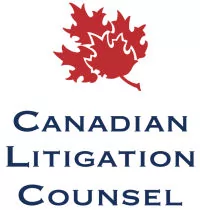Recently, the Supreme Court of Canada clarified the standard Courts should apply when determining the date from which a limitation period begins to run. This decision was made with New Brunswick's Limitation of Actions Act in mind, but will have an impact across Canada as many jurisdictions share similar legislation for determining limitation periods.
Any party considering pursuing a claim through the Courts will need to be aware of this clarification, or else they may find themselves barred from advancing their claim. Insurers pursuing subrogated claims will need to be especially mindful of these clarified standards as it is not always clear when a limitation date is triggered.
Grant Thornton v. New Brunswick Case
The case dealt with a claim brought by the Province of New Brunswick against Grant Thornton LLP for providing a negligent audit report that the Province then relied upon to issue $50,000,000 in loan guarantees for Atcon Group.
On May 19, 2009, Grant Thornton delivered a draft report to the Province stating that they had completed their review of Atcon's financial statements for the 2009 fiscal year and found that they presented fairly in all material respects and were prepared in accordance with Canadian generally accepted accounting principles. A final report was completed on June 18, 2009, which confirmed the same. The Province, relying on this report, then provided the loan guarantees for Atcon.
Four months after receiving the loan, Atcon declared bankruptcy and the Province paid out the loan guarantees on March 18, 2010. The Province then retained RSM Richter Inc. to perform a further review of Atcon's financial records. Richter issued a draft report of their findings on February 4, 2011 with a finalized report issued on November 30, 2012.
It was Richter's opinion that Atcon's 2009 financial statements had not been prepared to conform to generally accepted accounting principles. They went further and stated that Atcon had a systemic approach to overstating assets, revenues and profits while understating liabilities, expenses and losses.
Using this new information, the Province commenced a claim in negligence against Grant Thornton on June 23, 2014.
In turn, Grant Thornton sought summary dismissal of the Province's claim on the basis that it was barred by the two-year limitation period contained in the New Brunswick's Limitations of Actions Act. Summary dismissal was granted at the Court of Queen's Bench of New Brunswick, but was overturned on appeal. Upon further appeal, the Supreme Court of Canada reinstated the original decision and dismissed the claim.
Rationale
This case allowed the Supreme Court of Canada to clarify the standard that is to be applied by lower courts when determining when limitation periods are first triggered. In particular, the Court looked at how to determine whether a plaintiff has the requisite degree of knowledge to have been considered to have discovered a claim, also known as the "discoverability principle" which is contained in other provincial limitation legislation across Canada.
The Court stated that two distinct inquiries are required in order to determine discoverability. First, they must ask whether the inquiry into discovering if the limitation period has been triggered is to be assessed in the same manner as the common law rule of discoverability. Under this rule, a cause of action arises for the purposes of a limitation period when the material facts on which a claim is based have been discovered, or ought to have been discovered, by the Plaintiff through the exercise of reasonable due diligence. In many of the common law jurisdictions across Canada this step will be dispatched with quickly, as the discoverability rule has been captured in limitation legislation. New Brunswick's Limitation of Actions Act was expressly modeled on similar acts in Ontario, Saskatchewan and Alberta, all of which enshrine the common law rule of discoverability.
The second inquiry relates to the particular degree of knowledge required to discover a claim. A claim will be discovered when a plaintiff has knowledge, actual or constructive, of the material facts upon which a plausible inference of liability on the defendant's part can be drawn.
This allows the Court to balance two competing aims sought by discoverability. That is, it recognizes that it is unfair to deprive a plaintiff from bringing a claim before it can reasonably be expected to know it exists. This is balanced with ensuring the standard does not rise so high as to require certainty of the defendant's liability or perfect knowledge before bringing a claim.
Given this standard, the Supreme Court found that New Brunswick knew it had suffered a loss by March 18, 2010 when it paid out the loan guarantees and that it was indisputable that it knew it had suffered a loss when it received the first draft of the Richter report that disagreed with the Grant Thornton report.
In either case, the limitation period had expired well before the Province brought their claim and the action was dismissed.
Takeaway
This ruling confirms that a plaintiff does not need knowledge of all the constituent elements of a claim to trigger the limitation period. All that is required is a plausible inference of liability based on the material facts actually or constructively known.
All parties considering bringing a claim need to be mindful of this new clarification from the Supreme Court of Canada and should check on any pending claims they may have to ensure they do not find themselves barred from bringing an action.
* * *
Brownlee LLP is a member of the Canadian Litigation Counsel, a nationwide affiliation of independent law firms .
The content of this article is intended to provide a general guide to the subject matter. Specialist advice should be sought about your specific circumstances.


